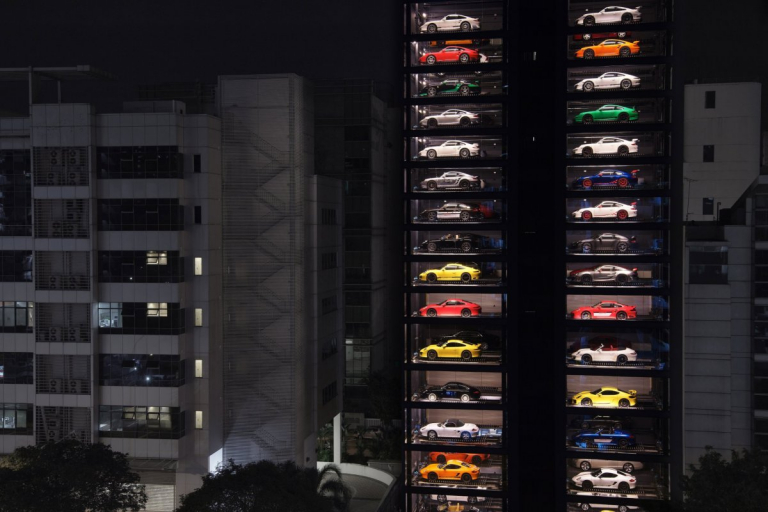
Singapore’s “car vending machine” is actually a vending machine-like tower which allows customers to pick a luxury vehicle on a touchscreen; the car arrives in just a few minutes. Image: YouTube via AFP Relaxnews
2018 will likely see a notable shift in the global auto industry. While vehicles inevitably move towards greater electrification, there might also be an even bigger revolution on the way, not in terms of what vehicles we buy, but how we buy them.
Toyota has recently done a significant U-turn by announcing a new strategy that, while focusing on hybrids and lug-in hybrids, will also include all-electric models, which until recently the company claimed weren’t a viable option for the short and medium term.
This decision shows just how significant the push towards electrification is. Every manufacturer seems to be embracing electrification now, even the likes of Morgan, and 2018 is likely to be seen in hindsight as the year when green vehicle technology really became part of the mainstream.
But while environmentally-friendly propulsion systems get all the limelight, there is an equally big revolution underway concerning how we pay for the vehicles we drive.
Leasing is an increasingly popular way of funding new vehicles, but even more imaginative funding solutions and ways of purchasing are likely to break cover in 2018.
Tesla already sells directly to the public, and last week, Ford announced it was embarking on a similar retailing model with its partner company in China, which could even be an interpretation of the “car vending machine” concept already seen in Singapore. If that proves successful, it’s likely Ford will try it elsewhere.
What Volvo is doing next year is even more significant.
Through its Polestar performance brand, Chinese-owned Volvo will be offering its Polestar 1 model on a subscription-only basis. Ordering will be online, and the monthly subscription will cover everything apart from fuel and insurance. At the end of the two- or three-year agreement, the driver will simply hand the car back to the manufacturer and take delivery of their new model. The old vehicle will be refurbished and offered to another buyer on a secondary-subscription basis as a pre-owned Polestar experience.
Only 500 Polestar Model 1s will be built next year and offered in this manner, but other manufacturers, especially some Chinese ones, will be keeping a close eye on this as well as other innovative new ways of selling vehicles. JB
RELATED STORIES:
Pickup truck market to heat up in 2018
32 road trips you have to experience in your lifetime